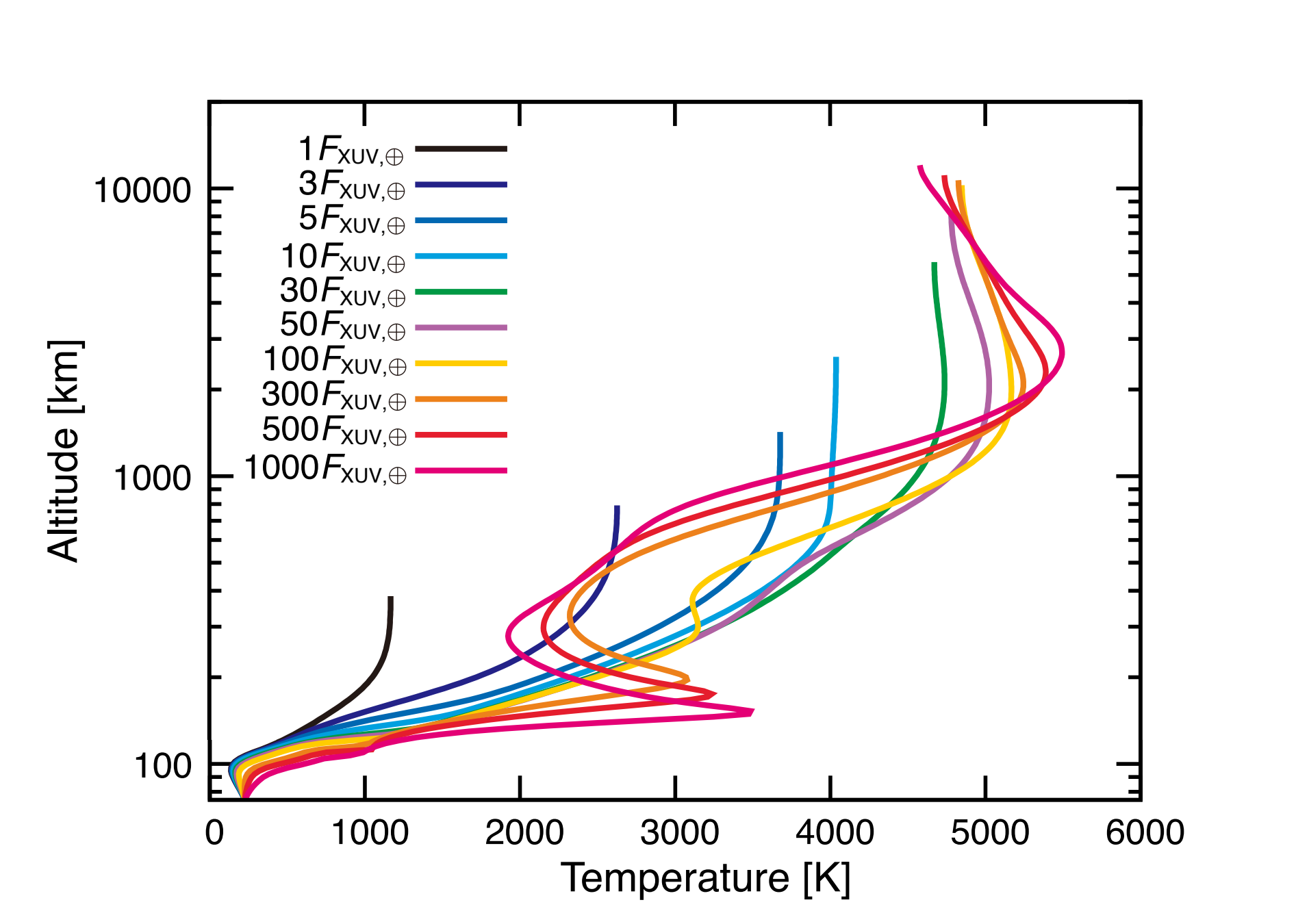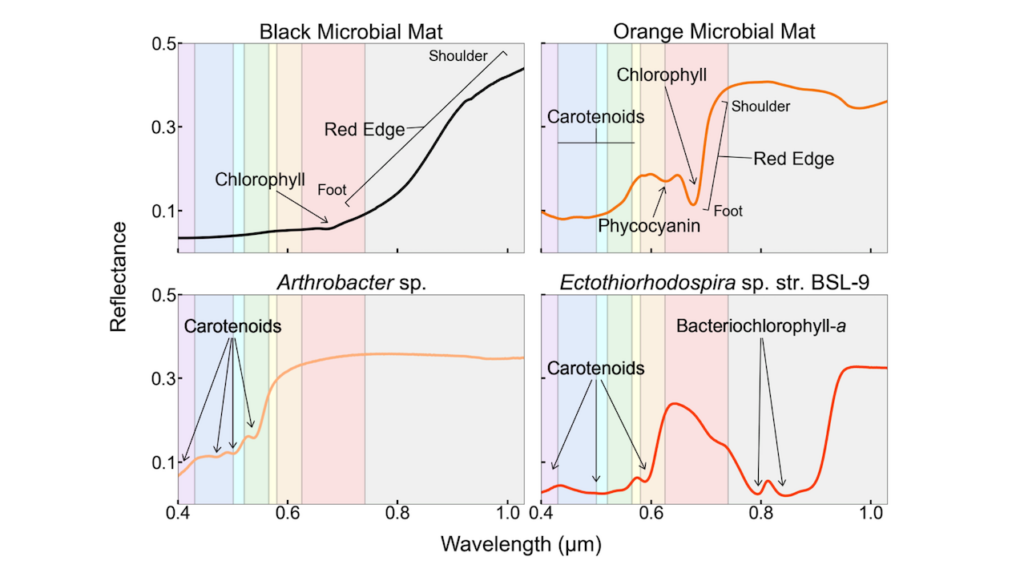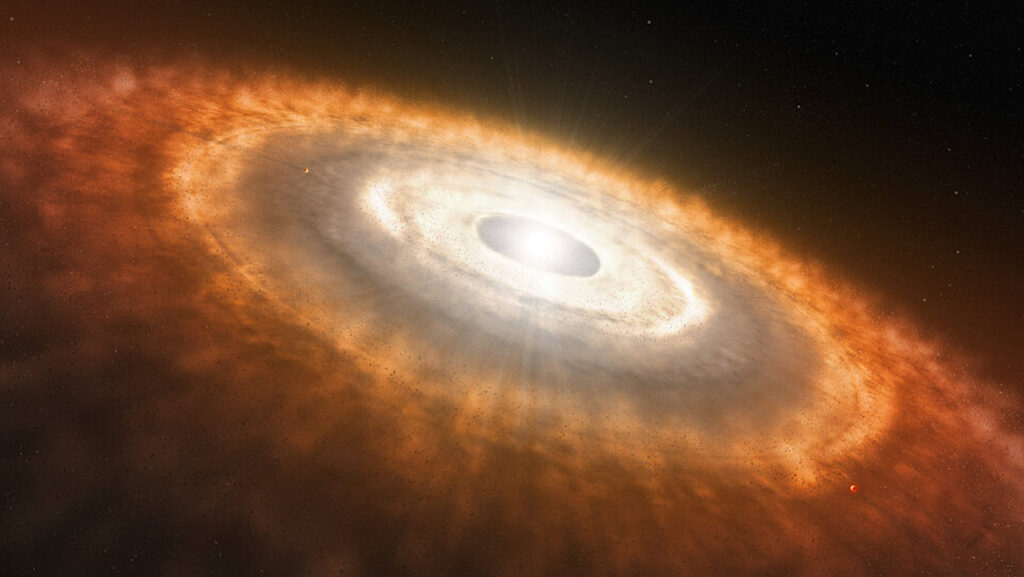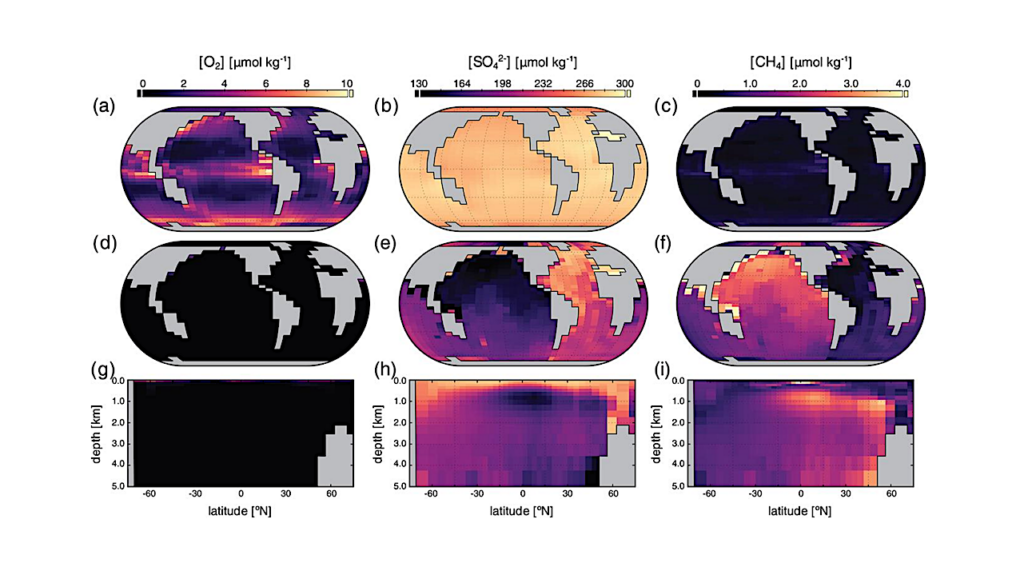Survival of Terrestrial N2-O2 Atmospheres in Violent XUV Environments Through Efficient Atomic Line Radiative Cooling

Atmospheres play a crucial role in planetary habitability. Around M dwarfs and young Sun-like stars, planets receiving the same insolation as the present-day Earth are exposed to intense stellar X-rays and extreme-ultraviolet (XUV) radiation.
This study explores the fundamental question of whether the atmosphere of present-day Earth could survive in such harsh XUV environments. Previous theoretical studies suggest that stellar XUV irradiation is sufficiently intense to remove such atmospheres completely on short timescales. In this study, we develop a new upper-atmospheric model and re-examine the thermal and hydrodynamic responses of the thermospheric structure of an Earth-like N2-O2 atmosphere, on an Earth-mass planet, to an increase in the XUV irradiation. Our model includes the effects of radiative cooling via electronic transitions of atoms and ions, known as atomic line cooling, in addition to the processes accounted for by previous models.
We demonstrate that atomic line cooling dominates over the hydrodynamic effect at XUV irradiation levels greater than several times the present level of the Earth. Consequentially, the atmosphere’s structure is kept almost hydrostatic, and its escape remains sluggish even at XUV irradiation levels up to a thousand times that of the Earth at present. Our estimates for the Jeans escape rates of N2-O2 atmospheres suggest that these 1 bar atmospheres survive in early active phases of Sun-like stars. Even around active late M dwarfs, N2-O2 atmospheres could escape significant thermal loss on timescales of gigayears. These results give new insights into the habitability of terrestrial exoplanets and the Earth’s climate history.
Akifumi Nakayama, Masahiro Ikoma, Naoki Terada
Comments: Published 2022 September 29 in ApJ
Subjects: Earth and Planetary Astrophysics (astro-ph.EP); Atmospheric and Oceanic Physics (physics.ao-ph)
Cite as: arXiv:2210.01460 [astro-ph.EP] (or arXiv:2210.01460v1 [astro-ph.EP] for this version)
Related DOI:
https://doi.org/10.3847/1538-4357/ac86ca
Focus to learn more
Submission history
From: Akifumi Nakayama
[v1] Tue, 4 Oct 2022 08:33:34 UTC (1,944 KB)
https://arxiv.org/abs/2210.01460
Astrobiology








